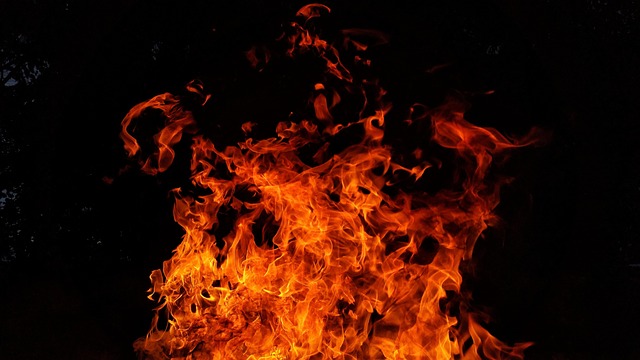San Antonio's fire damage restoration process prioritizes health and safety by addressing smoke pollution's multifaceted impact. It involves assessment, containment, decontamination, and advanced air purification with HEPA and activated carbon filters to eliminate toxic gases, fine particles, and volatile organic compounds (VOCs). This comprehensive approach restores properties to pre-fire conditions, ensuring safe air quality and mitigating structural damage for San Antonio residents.
In the aftermath of a fire, San Antonio residents often face a silent but significant threat: smoke damage. Understanding the impact of smoke on indoor air quality is crucial for the San Antonio fire damage restoration process. This article demystifies the effects of smoke and highlights the critical role of specialized air purification systems in mitigating its harm. We’ll guide you through choosing the most effective technology for your restoration needs, ensuring a healthier, safer home environment post-fire.
- Understanding Smoke Damage and Its Impact on Indoor Air Quality
- The Role of Specialized Air Purification Systems in Fire Damage Restoration
- Choosing the Right Air Purification Technology for Effective San Antonio Fire Damage Restoration
Understanding Smoke Damage and Its Impact on Indoor Air Quality

Smoke damage from a fire can leave behind harmful residues and pollutants, significantly impacting indoor air quality. In San Antonio, fire damage restoration is a meticulous process aimed at mitigating these effects. When a fire occurs, it generates a complex mix of toxic gases, fine particles, and volatile organic compounds (VOCs) that become trapped in fabrics, walls, and other surfaces. These contaminants can persist long after the flames are extinguished, posing potential health risks to occupants.
The impact of smoke damage extends beyond immediate health concerns. It can cause unpleasant odors, discoloration, and even structural deterioration. A comprehensive fire damage restoration process involves several steps: assessment, containment, decontamination, and restoration. Professional restorers utilize advanced equipment and techniques, such as air purification systems, to remove smoke odor and particles, ensuring a safe and healthy living environment for San Antonio residents post-fire.
The Role of Specialized Air Purification Systems in Fire Damage Restoration

After a fire, the smoke left behind can be just as damaging to a property and its occupants as the initial flames. Smoke contains a wide range of toxic chemicals and particulate matter that can cause respiratory issues and other health problems. That’s where specialized air purification systems come into play in the San Antonio fire damage restoration process. These advanced systems are designed to thoroughly clean the air, removing not just visible smoke but also invisible pollutants like soot, ash, and volatile organic compounds (VOCs).
By employing these specific technologies, restoration professionals can ensure that once a home or business is deemed safe, it’s truly restored to its pre-fire condition. This includes eliminating unpleasant odors and ensuring the air quality is safe for reoccupation. Specialized air purification systems are a crucial component of the comprehensive San Antonio fire damage restoration process, focusing on both visible and hidden elements to restore not just structures but also the health and well-being of those affected by the fire.
Choosing the Right Air Purification Technology for Effective San Antonio Fire Damage Restoration

When it comes to San Antonio fire damage restoration, selecting the appropriate air purification technology is a critical step in ensuring a thorough and successful cleanup. The right system can effectively remove lingering smoke and odors, improving indoor air quality and creating a healthier environment for occupants. In this context, HEPA (High-Efficiency Particulate Air) filters stand out as a game-changer. These advanced filters capture microscopic particles, including smoke and ash residue, with remarkable efficiency, making them ideal for post-fire restoration.
Understanding the San Antonio fire damage restoration process involves recognizing the unique challenges posed by smoke. Different types of fires release various toxic compounds and particulate matter into the air. Therefore, an air purification system capable of addressing these diverse pollutants is essential. Activated carbon filters, often paired with HEPA technology, offer a comprehensive solution. They absorb and neutralize odors, volatile organic compounds (VOCs), and other chemical residues commonly found after a fire, ensuring that the restoration process not only cleans but also rejuvenates indoor spaces to their original state.
After understanding the profound impact of smoke damage on indoor air quality and navigating through the various air purification systems available, it’s clear that specialized technology is a crucial component of the San Antonio fire damage restoration process. By choosing the right air purification technology, you can effectively mitigate the effects of smoke, ensuring a healthier and safer living environment. This comprehensive approach to restoration not only repairs physical structures but also breathes new life into spaces affected by fire, allowing residents to return home with peace of mind.
